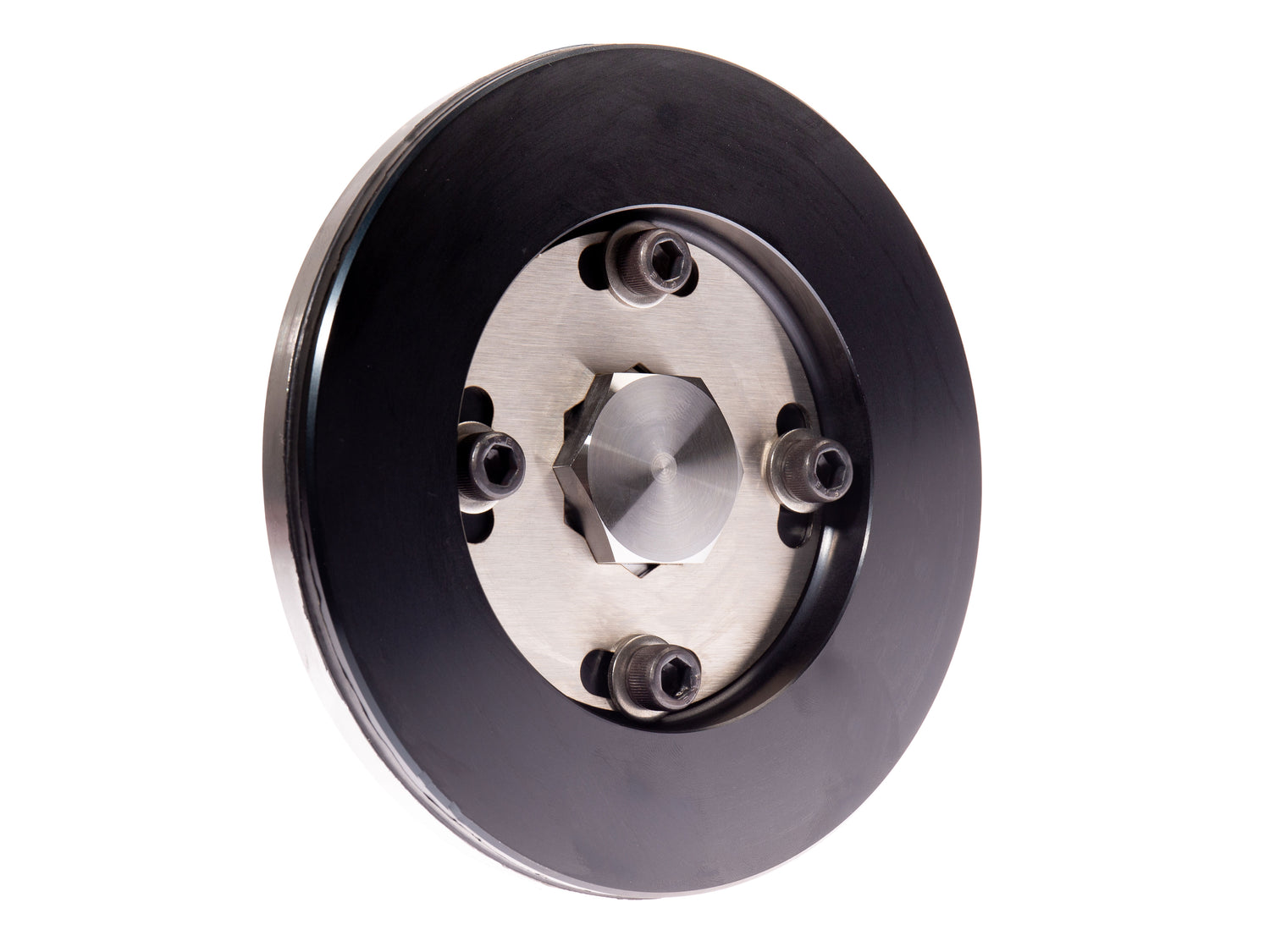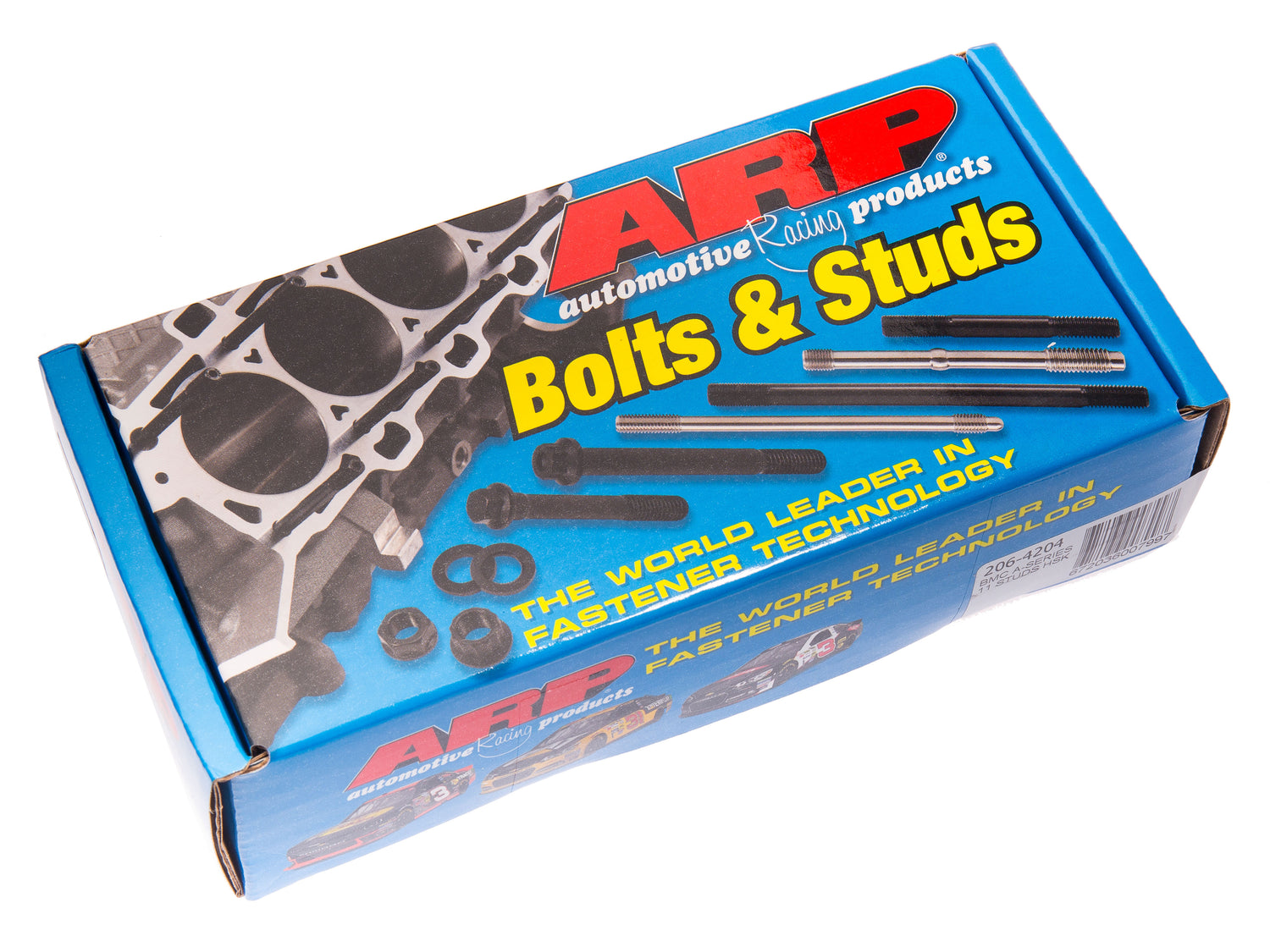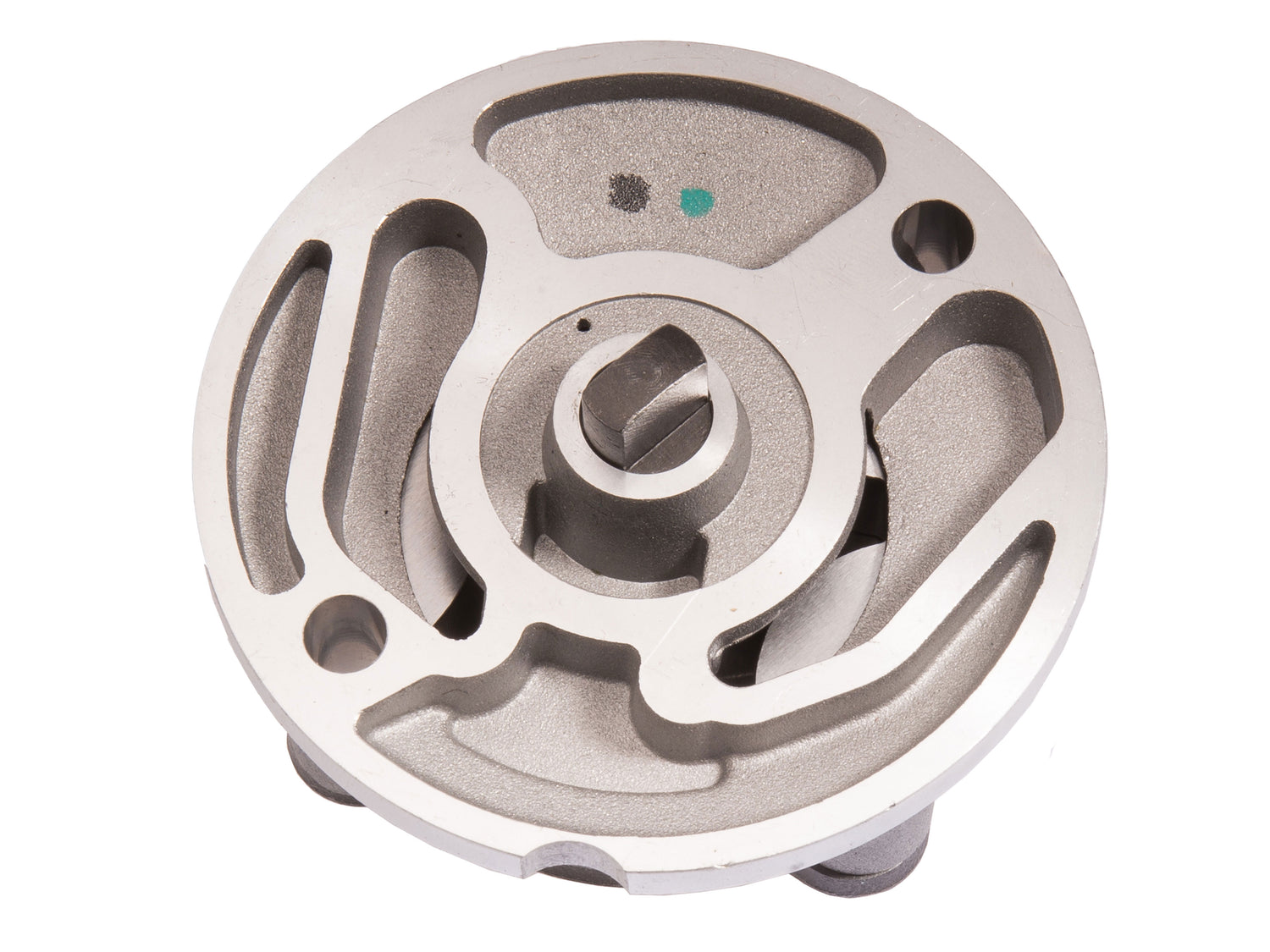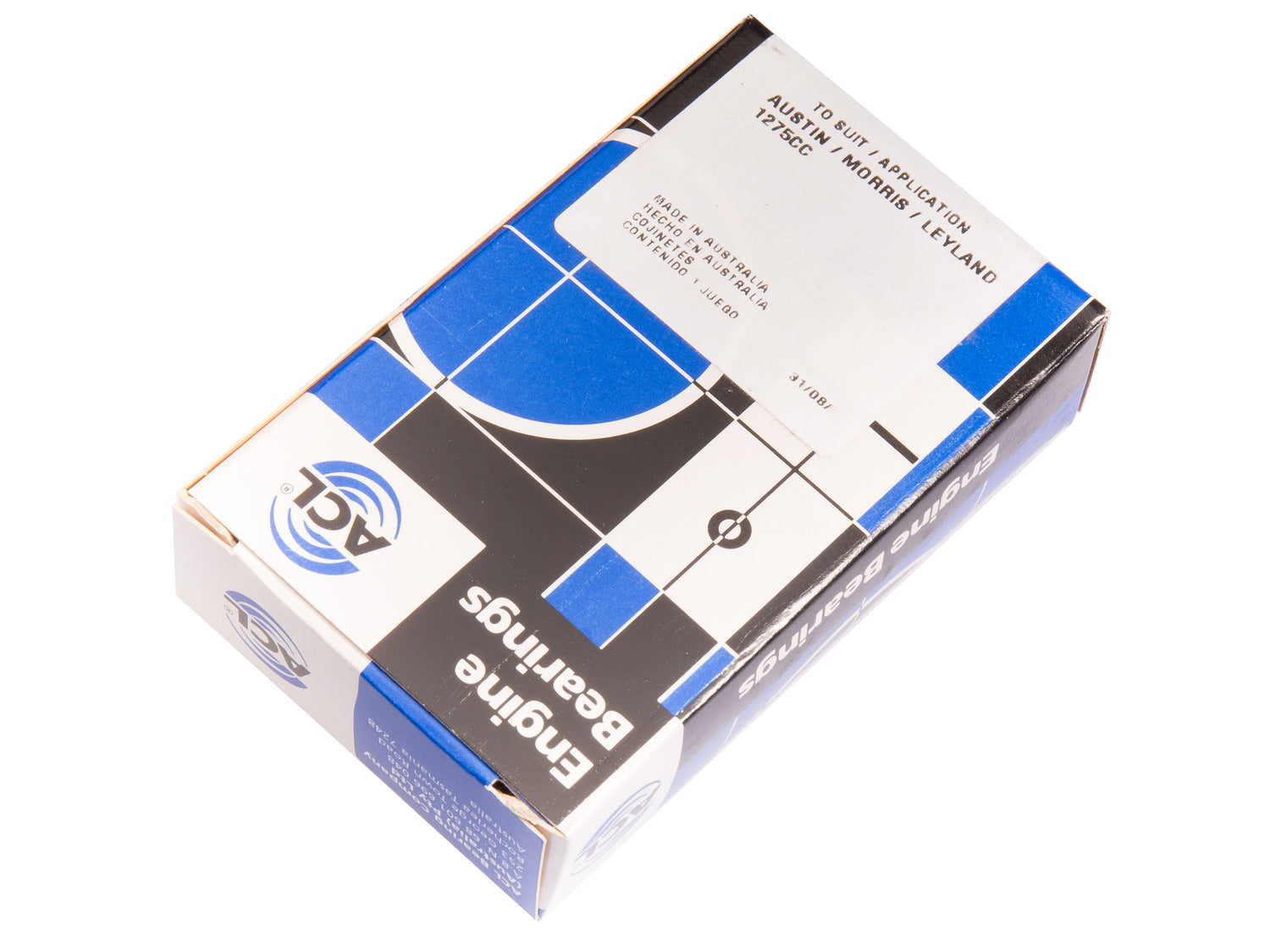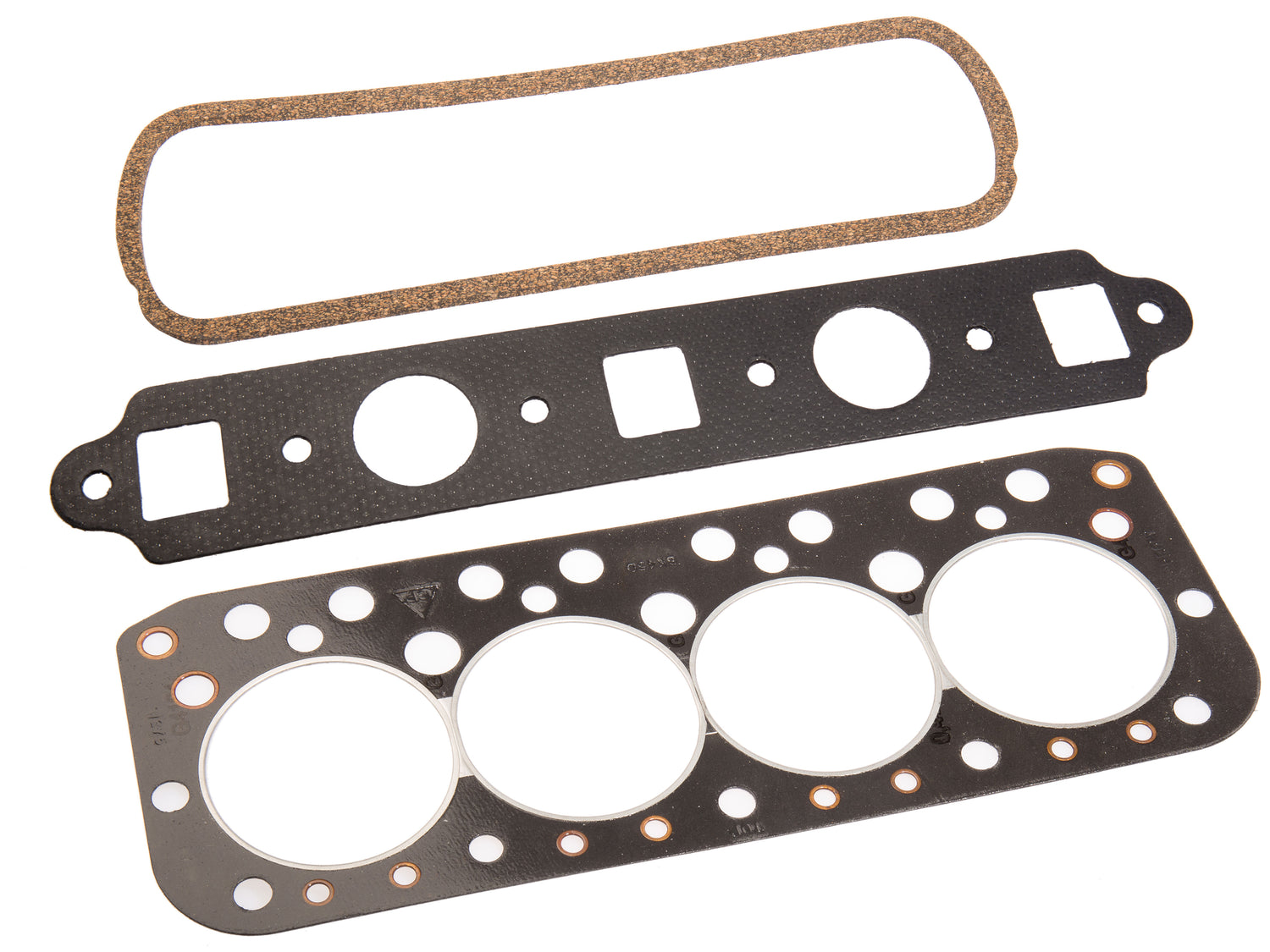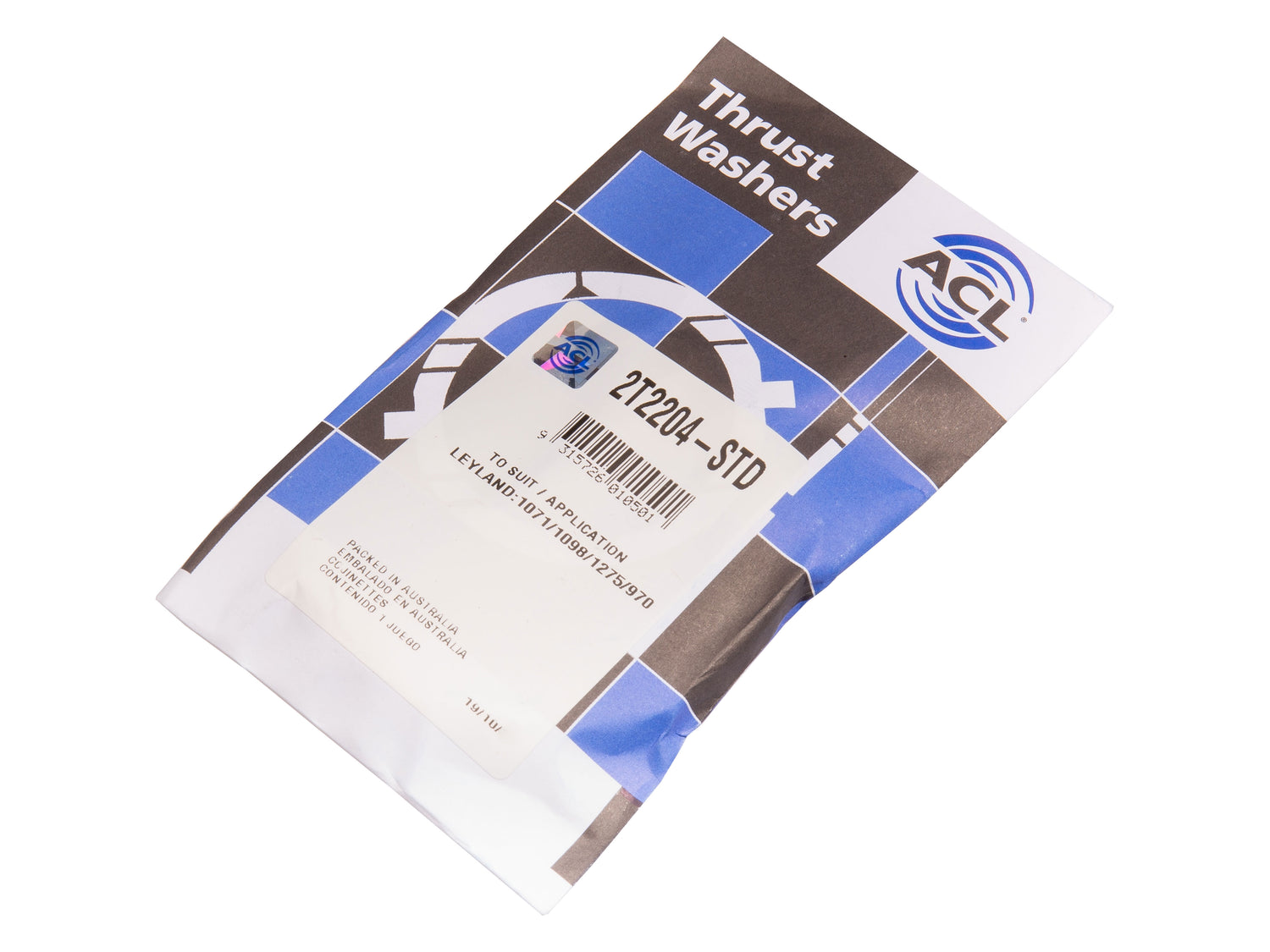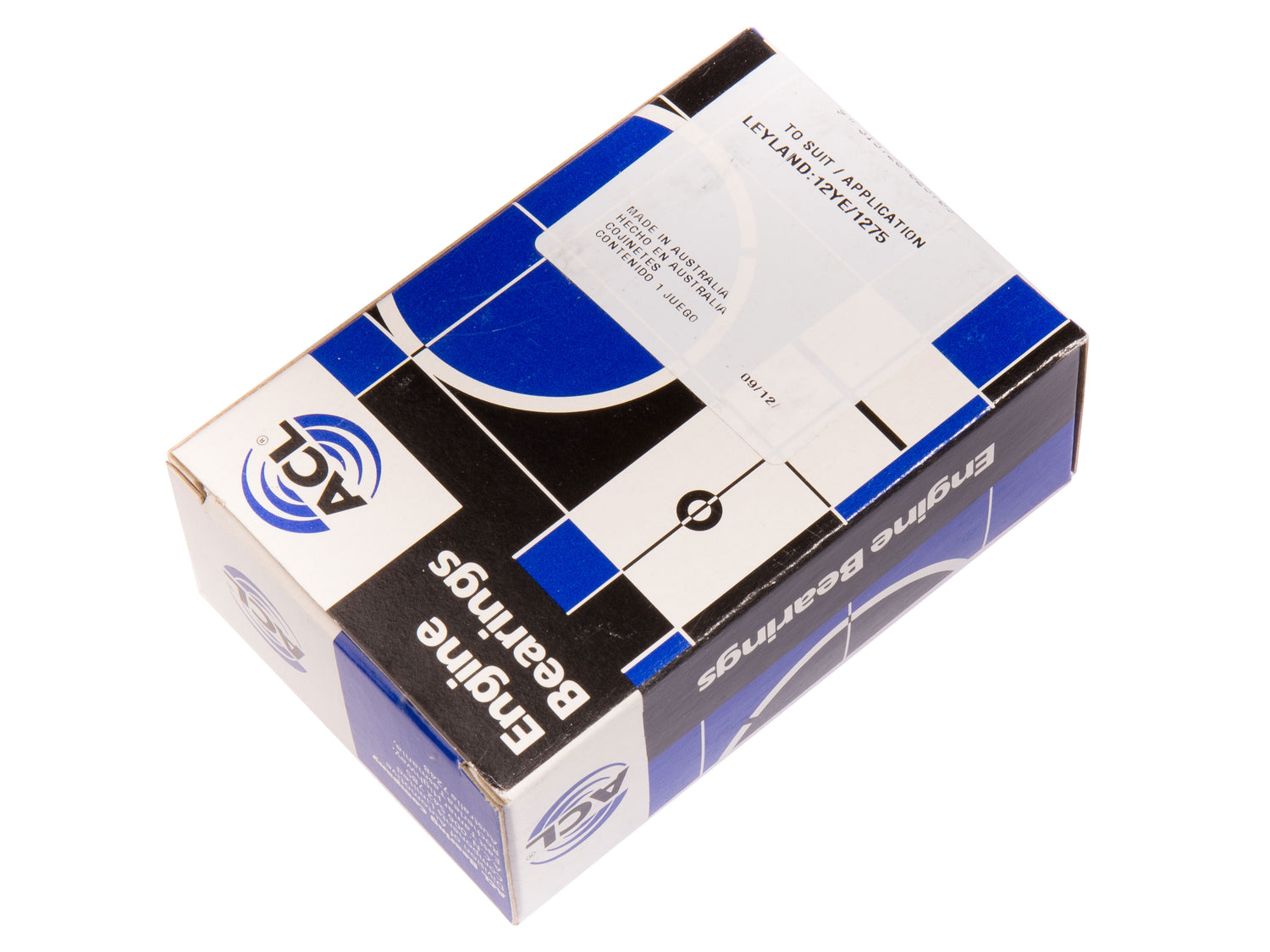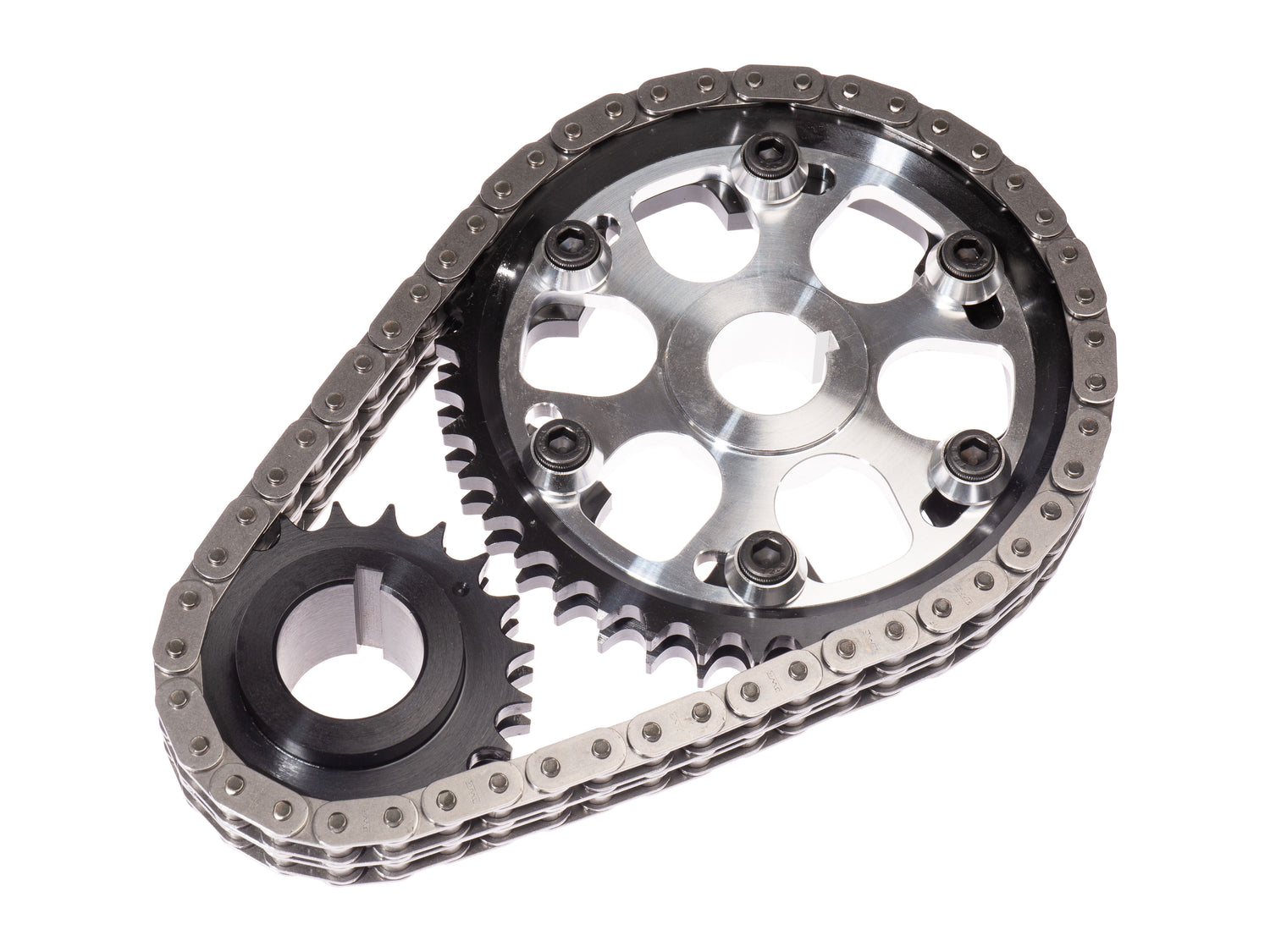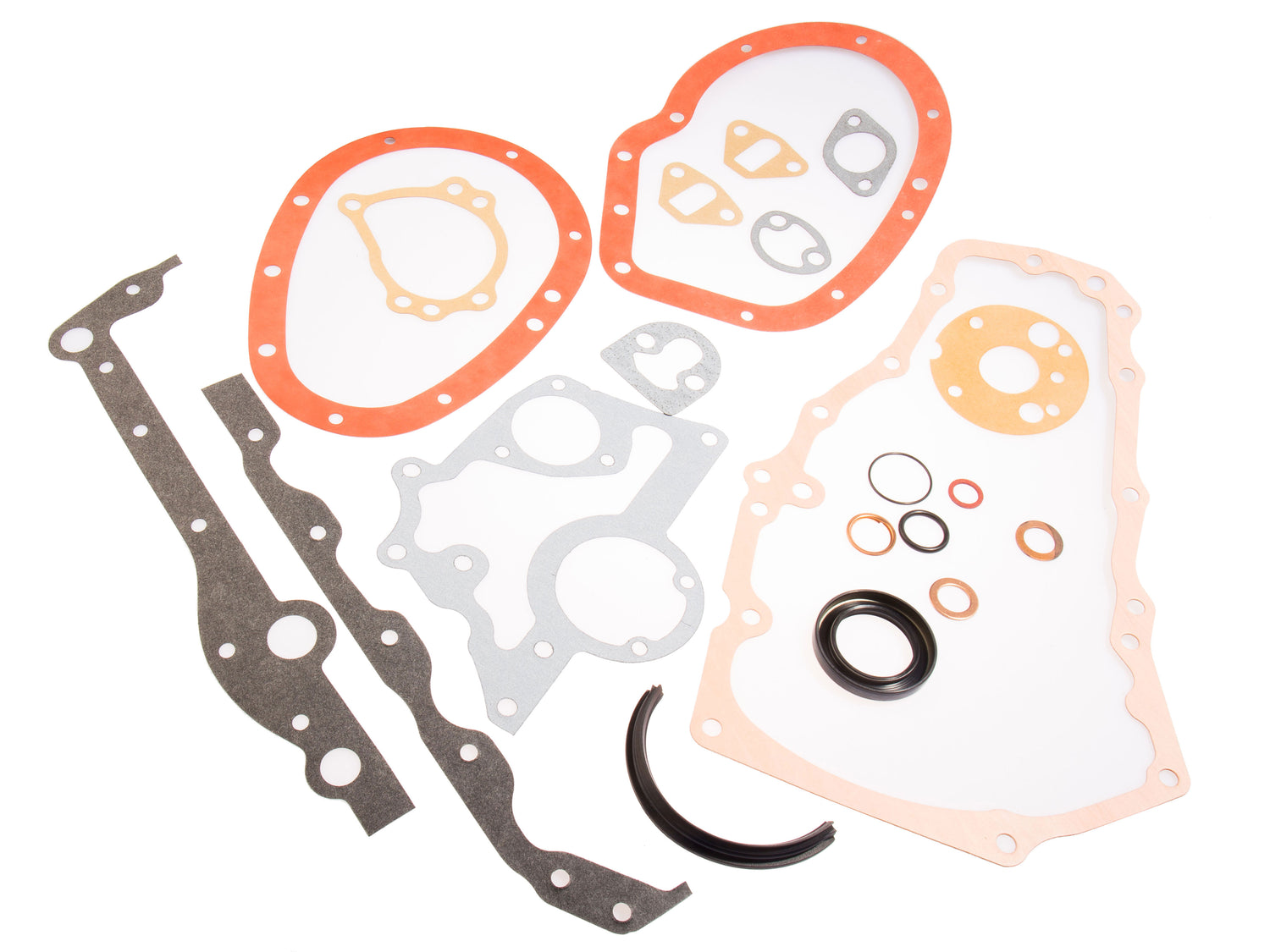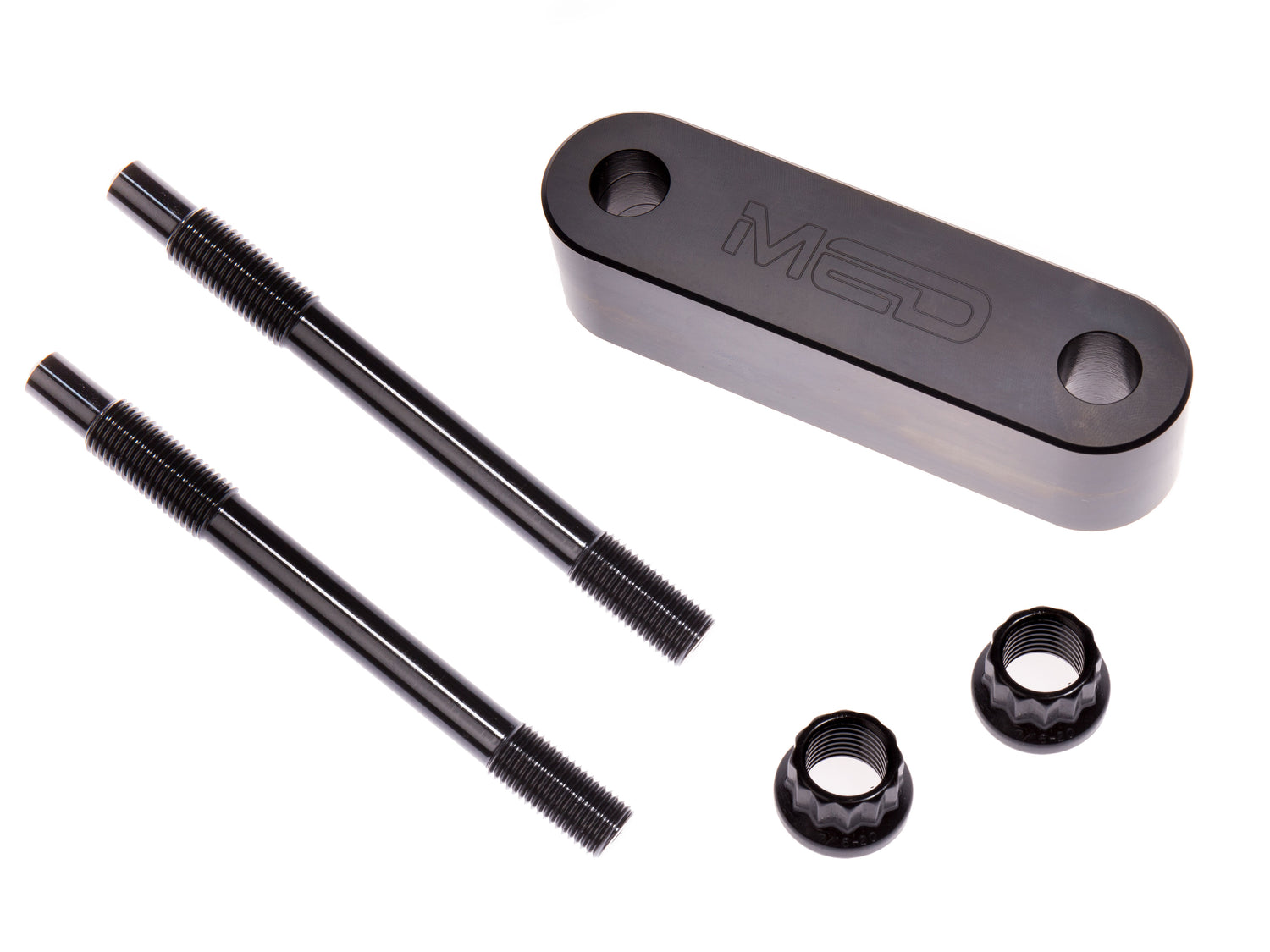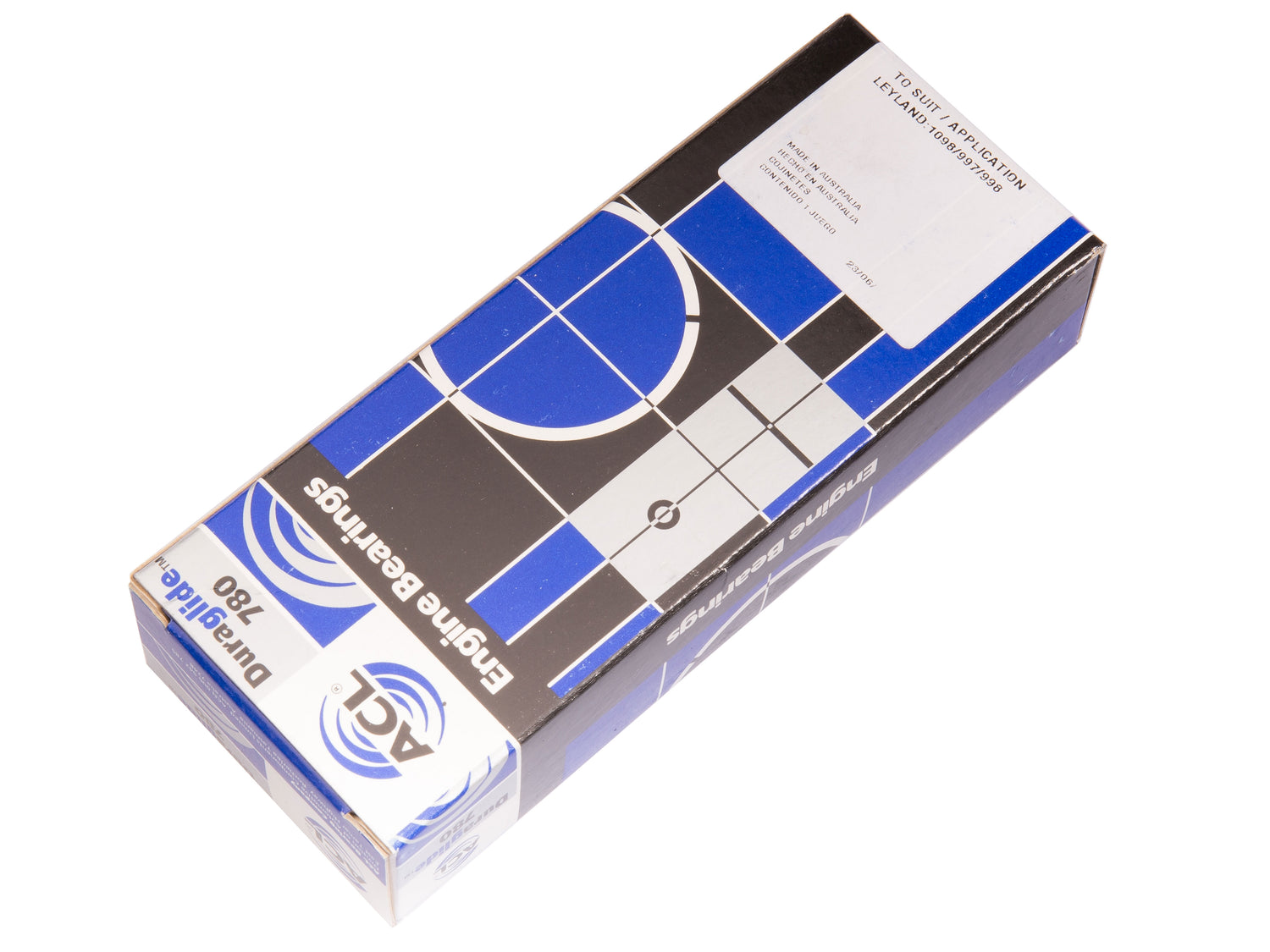Classic Mini Drop Gears Explained
Following on from our classic Mini final drive ratio blog, this time we're delving into the Mini drop gears, also known as 'transfer gears'.
Both names are pretty a logical way to describe the function of these three small gears that sit between the A-Series engine and gearbox - power is transferred from the crankshaft, dropped down below to the gearbox.
Why does the Mini need drop gears?
Drop gears between the engine and gearbox are not needed for the vast majority of internal combustion engines. Typically the gearbox mounts to the rear of the engine, with its input shaft driven directly from crankshaft, via the clutch assembly. That's the case with rear-wheel drive cars as well as most front-wheel drive layouts, albeit with the engine mounted in a different direction. 
The classic Mini engine is unusual in that the gearbox is located within the sump, directly below the crank case, for compact packaging. This gearbox-in-sump idea is not unique to the Mini - it's appeared in various Peugeots, Datsuns, Fiats and even the Lamborghini Miura! It's now largely obsolete, aside from motorbike applications.
Anyway, we digress. Three drop gears are an essential, or else the transmission would be rotating in the opposite direction to the engine.

Up top, rotating clockwise around the crankshaft we have the primary gear. This rotates the idler gear below, anti-clockwise. In-turn the idler gear drives the input gear on the end of the gearbox mainshaft, returning to a clockwise direction.
We say clockwise - to save confusion, this is if you're looking at the engine from the front, or rather, the water pump end. If looking from the rear of the engine, as above, the arrows show the direction of travel.
When do I need to upgrade my Mini drop gears?
For standard engine rebuilds, the factory-fitment drop gears should provide ample strength for the job at hand. It's only when the engine is modified for increased power outputs that the drop gears start to become an issue.
However, that will also depend largely on which gearbox you are planning to run, and more specifically the strength of the idler gear bearings.
Early Minis, 1959-1968, featured a 3-synchromesh gearbox, either with a 'magic wand' (as above) or remote gear lever arrangement. The idler gear needle roller bearings measure just 1.000" in external diameter, to suit a 0.750" shaft. As a result, the needle rollers inside are particularly small, and do not cope well with large increases in engine torque.
From late 1968 with the advent of the 4-synchro gearbox, these bearings were increased in outside diameter to 1.059", allowing for larger diameter needle rollers inside, and increased overall strength and reliability.
Here's the two bearings side-by-side for comparison...
However, problems persisted in high power applications, so when the A+ engine developments were launched in 1982, along came a much larger idler gear spindle and bearings. The shaft spindles were increased from 0.750" to 0.875" and the bearing outside diameter from 1.059" to 1.375"...
If you plan to use a pin-type idler gear rather than the MED roller bearing upgrade, which we'll cover in a bit, you will need to match the transmission case to the transfer gear housing with regards to the idler gear bearing diameter.
When do I need to use straight-cut drop gears?
A popular upgrade for competition Minis since the 1960s, straight-cut drop gears give that distinctive rally car noise, but it's not all about the sound effects.
Straight-cut drop gears are stronger and more reliable than the standard factory helical design, with less side-loading effect, to transfer power more efficiently through to the gearbox. Combined with a straight-cut gear set and final drive, it's possible to 'free up' an extra 10bhp through to the front wheels.
As a general rule, for reliability we would highly recommend straight-cut drop gears for A-Series engines beyond 100bhp, especially if running the smaller pre-A+ idler gear bearings. Surpassing 100bhp does place an A-Series engine into a more competition-orientated state of tune.
At MED we produce drop gear sets exclusively in a straight-cut design, with the primary gear tooth width increased by 2.4mm to 17.2mm, and an extra wide input gear to further increase strength and reduce tooth wear.
The primary gear bush is a floating design, held in place with a circlip, so not only can you replace the bush easily in future, it can also be adapted to suit either a 1275 or 998 Mini crankshaft.

For the ultimate upgrade, we suggest the MED roller bearing drop gear set, which completely removes the standard needle roller bearings from the equation, in favour of a large (2.000" outside diameter) roller bearing for the idler gear.
The pic below speaks a thousand words...

The needle roller bearings must first be removed from the gearbox and transfer gear housings. A spindle shaft can then be pressed into the gearbox housing, with a top hat spacer to support the opposite end in the transfer housing. The idler gear floats on the roller bearing.
Another advantage here is that you can potentially mix and match transmission and transfer gear housings between A-Series and A+, but do check in with us first to double check stock on the spindles and top hats. Stock dependant, we also have a limited number of 3-synchro size spindles/top hats to suit the early Mini gearboxes.
We are sometimes asked for a helical roller bearing idler gear setup, with all the strength of our straight-cut drop gears, but without the running noise. Unfortunately, the helical gear cut and resulting side load is not suitable for a floating roller bearing setup; it doesn't work.
Which ratio drop gears do I need?
One of our most common questions from customers looking to purchase a set of drop gears. Aside from 'it depends', for most the answer is '1:1'. But how can you change the ratio of a drop gear set, and what difference does it make?
Our straight-cut drop gears can be supplied with a 23 or 24-tooth profile on the primary gear and input gear. So you can run 23/23, 23/24, 24/24 or 24/23-tooth gears. The idler gear is always fixed to a 30-tooth profile, so has no effect here.

With a regular 1:1 ratio drop gear set, the RPM of the primary gear is matched by the input gear. In other words, the output speed from the engine is equal to the input speed at the gearbox. Of course, through a multitude of gears, that RPM is reduced down by transmission to a more sensible RPM at the wheels, so the engine has a fighting chance of driving the car with only a modest torque output.
If we swap the primary gear and input gear tooth counts around, it will adapt the speed of the input gear by a small degree. This gives a similar effect to changing the final drive ratio of your Mini, but without needing to lift the engine and gearbox to remove the differential.
The table below shows the various drop gear combinations and their effective ratios.
| Primary gear | Input gear | Drop gear ratio |
| 23-tooth | 23-tooth | 1:1 |
| 23-tooth | 24-tooth | 1:1.043 |
| 24-tooth | 24-tooth | 1:1 |
| 24-tooth | 23-tooth | 1:0.958 |
Now if you'd like to calculate your effective final drive ratio, multiply the two together...
| Final drive | With 1.1043 drop gears | With 0.958 drop gears |
| 3.47:1 | 3.62:1 | 3.32:1 |
| 3.75:1 | 3.91:1 | 3.59:1 |
| 3.88:1 | 4.04:1 | 3.71:1 |
| 4.066:1 | 4.24:1 | 3.90:1 |
| 4.2:1 | 4.38:1 | 4.02:1 |
| 4.5:1 | 4.69:1 | 4.31:1 |
If you take a look at the 'Which final drive ratio do I need?' blog, you'll be able to see the difference this makes.
Here's a typical example;
| Final drive ratio | Speed at 8000rpm, 10" wheels | With 1.1043 drop gears | With 0:958 drop gears |
| 3.88:1 | 117mph | 112mph | 122mph |
For lower RPM road use, the difference will be negligible, so really it's only useful for high RPM race use when changing between circuits. For example, if you're at fast flowing circuit like Thruxton one weekend and tight twisty circuit like Brands Hatch Indy the week after, it would be well worth considering.
Just bear in mind, changing the input gear will require a lot more work than changing the primary gear, so choose your drop gear set wisely if you do plan to switch ratios mid-season.
And any more questions, don't hesitate to get in touch!
August 2025




